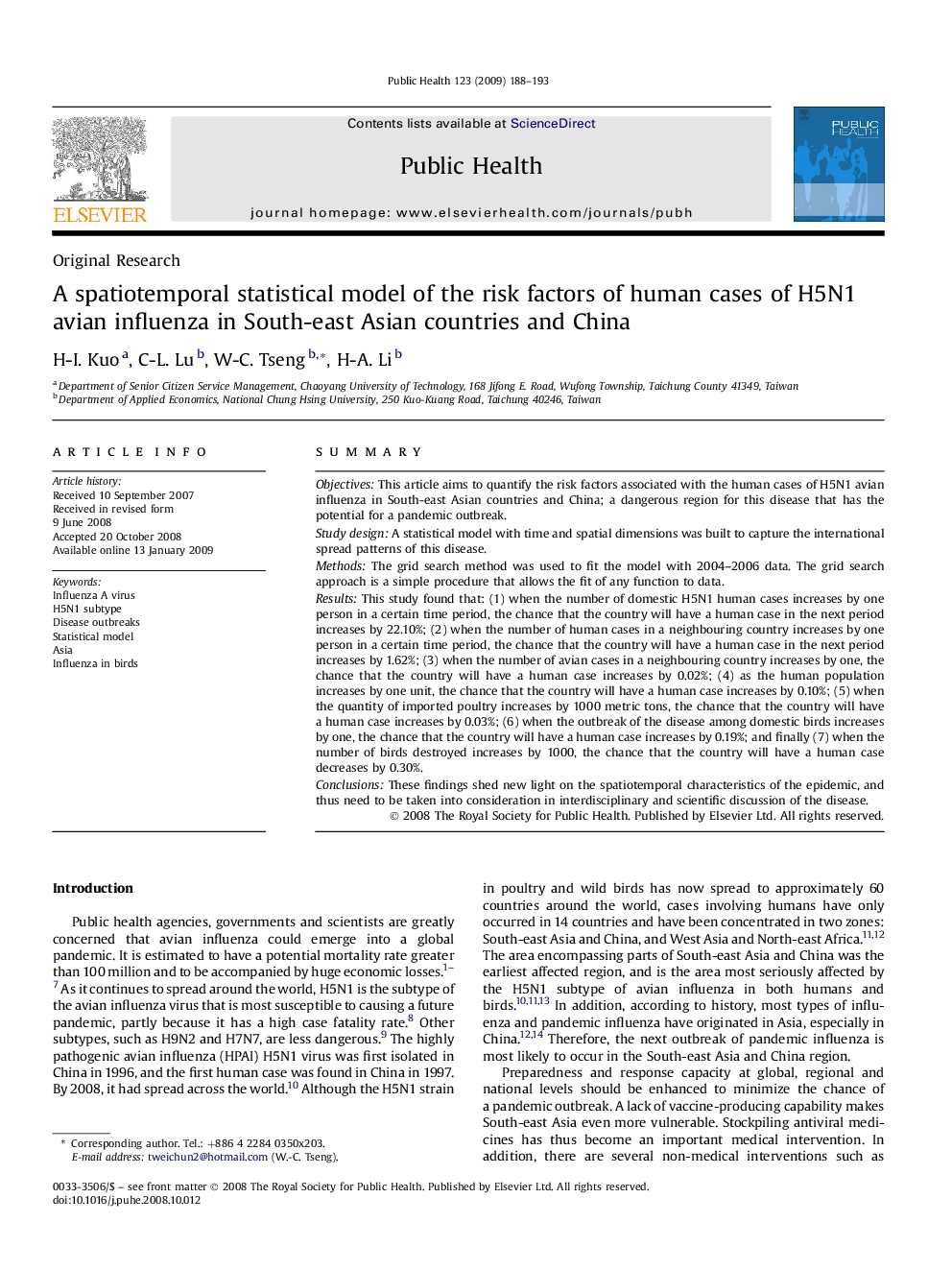| کد مقاله | کد نشریه | سال انتشار | مقاله انگلیسی | نسخه تمام متن |
|---|---|---|---|---|
| 1088960 | 951619 | 2009 | 6 صفحه PDF | دانلود رایگان |

SummaryObjectivesThis article aims to quantify the risk factors associated with the human cases of H5N1 avian influenza in South-east Asian countries and China; a dangerous region for this disease that has the potential for a pandemic outbreak.Study designA statistical model with time and spatial dimensions was built to capture the international spread patterns of this disease.MethodsThe grid search method was used to fit the model with 2004–2006 data. The grid search approach is a simple procedure that allows the fit of any function to data.ResultsThis study found that: (1) when the number of domestic H5N1 human cases increases by one person in a certain time period, the chance that the country will have a human case in the next period increases by 22.10%; (2) when the number of human cases in a neighbouring country increases by one person in a certain time period, the chance that the country will have a human case in the next period increases by 1.62%; (3) when the number of avian cases in a neighbouring country increases by one, the chance that the country will have a human case increases by 0.02%; (4) as the human population increases by one unit, the chance that the country will have a human case increases by 0.10%; (5) when the quantity of imported poultry increases by 1000 metric tons, the chance that the country will have a human case increases by 0.03%; (6) when the outbreak of the disease among domestic birds increases by one, the chance that the country will have a human case increases by 0.19%; and finally (7) when the number of birds destroyed increases by 1000, the chance that the country will have a human case decreases by 0.30%.ConclusionsThese findings shed new light on the spatiotemporal characteristics of the epidemic, and thus need to be taken into consideration in interdisciplinary and scientific discussion of the disease.
Journal: Public Health - Volume 123, Issue 2, February 2009, Pages 188–193